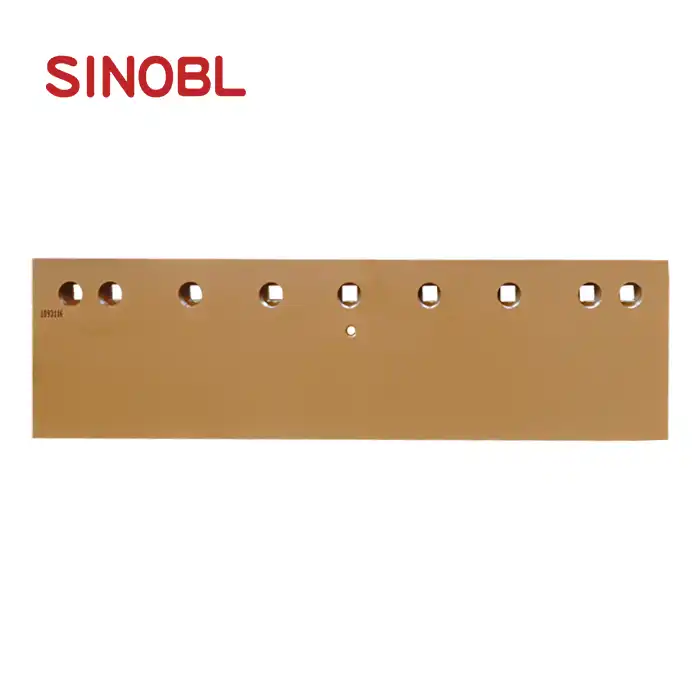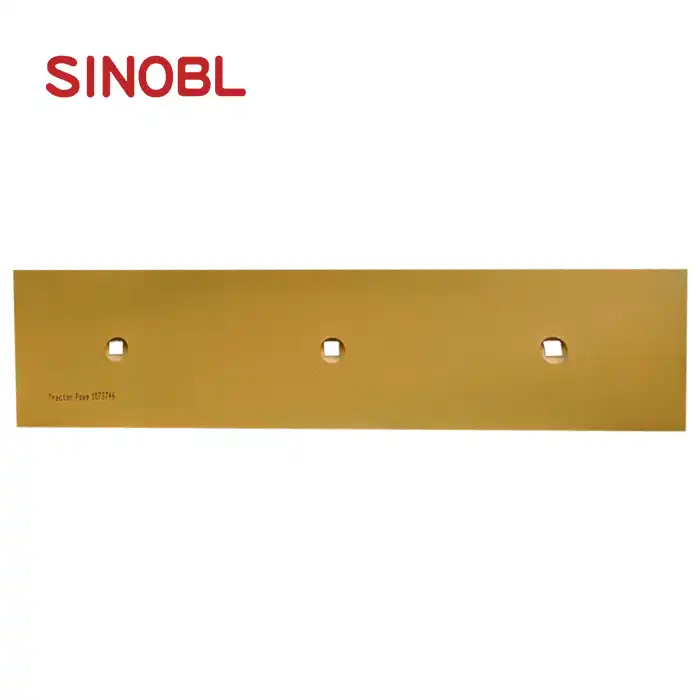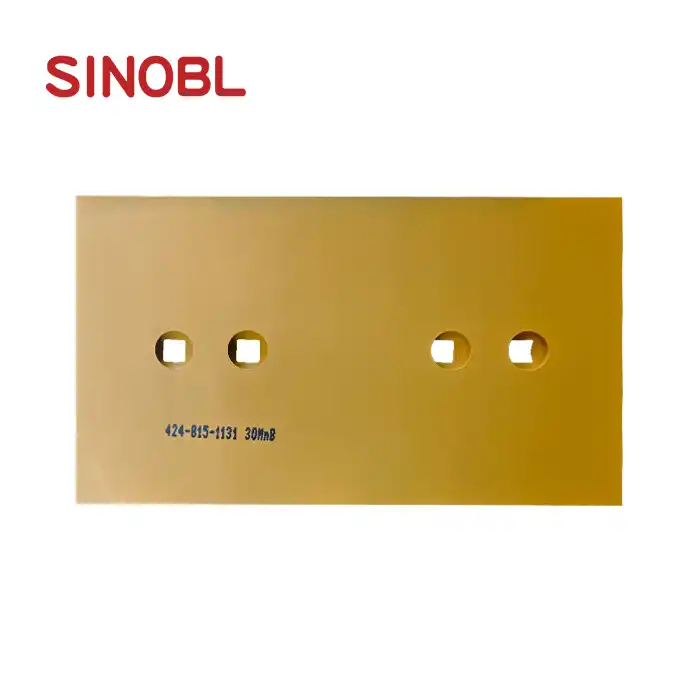Solving Alignment Issues in SD16 Sprocket Segments
Proper alignment of sprocket segments is critical for maintaining optimal performance and extending the operational life of SD16 bulldozers. When alignment issues occur, they can lead to premature wear, increased maintenance costs, and significant downtime that impacts project productivity. Understanding the root causes of alignment problems and implementing effective solutions is essential for equipment operators and maintenance professionals working with heavy machinery in demanding environments. The Dozer Sprocket Segment SD16 serves as a crucial component in the drive system, and addressing alignment challenges requires both technical expertise and high-quality replacement parts. This comprehensive guide explores practical approaches to identifying, preventing, and resolving alignment issues while ensuring your SD16 bulldozer maintains peak performance throughout its operational lifecycle.
Root Causes of SD16 Sprocket Segment Misalignment
Wear Pattern Analysis and Detection Methods
Identifying the underlying causes of sprocket segment misalignment begins with thorough wear pattern analysis. The Dozer Sprocket Segment SD16 experiences various stress patterns during operation, and abnormal wear can indicate specific alignment problems before they become critical failures. Visual inspection of segment teeth reveals telltale signs such as uneven wear across the tooth face, excessive wear on one side of the segment, or unusual scoring patterns that suggest improper track engagement. Advanced diagnostic techniques include measuring tooth height variations, checking for cracks or stress fractures, and evaluating the overall dimensional integrity of each segment. Professional maintenance teams utilize precision measuring tools to assess segment condition systematically. The heat-treated boron steel construction of quality segments, such as those manufactured by Shanghai SINOBL with part number 16Y-18-00014H, provides excellent durability but still requires regular monitoring. Wear measurement protocols should include documentation of tooth height reduction, evaluation of bolt hole elongation, and assessment of any deformation in the segment body. These measurements help establish replacement schedules and identify patterns that may indicate systematic alignment issues requiring immediate attention.
Impact Loading and Operational Stress Factors
Heavy-duty applications place tremendous stress on Dozer Sprocket Segment SD16 components, particularly in large-scale construction projects and open-pit mining operations. Impact loading occurs when the bulldozer encounters sudden resistance or operates on uneven terrain, creating shock loads that can gradually affect sprocket alignment. The 8.3 kg unit weight of each segment must withstand continuous pounding while maintaining precise positioning relative to adjacent segments and the drive sprocket assembly. Understanding operational stress factors helps predict potential alignment issues before they occur. Factors such as track tension variations, uneven ground conditions, debris impact, and operator technique all contribute to the overall stress environment. Mining operations present particularly challenging conditions where rock debris and extreme loads can accelerate wear patterns. The three-tooth design of SD16 segments distributes loads effectively, but sustained high-stress operation requires careful monitoring of alignment parameters to prevent cascading failures that could compromise entire track systems.

Material Fatigue and Environmental Considerations
Environmental factors significantly influence the development of alignment issues in sprocket segments. Extreme temperatures, corrosive conditions, and abrasive materials all contribute to material fatigue that can manifest as alignment problems over time. The heat-treated boron steel used in quality Dozer Sprocket Segment SD16 components provides excellent resistance to environmental degradation, but prolonged exposure to harsh conditions still requires proactive maintenance approaches. Temperature cycling between hot and cold environments creates expansion and contraction stresses that can gradually affect segment positioning. Corrosive environments, such as those found in coastal construction projects or chemical processing facilities, can accelerate material degradation around bolt holes and contact surfaces. Abrasive materials like sand, gravel, and crushed rock create continuous wear that must be monitored to prevent alignment drift. Implementing proper maintenance schedules that account for environmental factors helps ensure optimal segment performance throughout the equipment's operational life.
Preventive Maintenance Strategies for Optimal Alignment
Systematic Inspection and Documentation Protocols
Effective preventive maintenance begins with establishing systematic inspection protocols that identify potential alignment issues before they impact equipment performance. Regular inspection of Dozer Sprocket Segment SD16 components should follow documented procedures that ensure consistency and thoroughness across maintenance teams. These protocols include visual inspection of segment condition, measurement of critical dimensions, and documentation of findings that establish baseline performance data for trend analysis. Inspection schedules should be tailored to operational intensity and environmental conditions. Equipment operating in demanding mining environments may require daily visual inspections and weekly detailed measurements, while construction equipment in moderate conditions might follow less frequent but equally thorough inspection protocols. Documentation systems should capture segment identification numbers, measurement data, photographic evidence of wear patterns, and maintenance actions taken. This information creates valuable databases that help predict future maintenance needs and optimize replacement schedules. Professional maintenance teams benefit from standardized inspection forms and digital documentation systems that facilitate data analysis and reporting. Integration with equipment management systems allows correlation of maintenance data with operational parameters, helping identify operational practices that may contribute to alignment issues. The three-hole mounting configuration of SD16 segments requires specific attention to bolt torque specifications and hole condition during each inspection cycle.

Precision Installation and Torque Management
Proper installation techniques are fundamental to preventing alignment issues throughout the service life of sprocket segments. The Dozer Sprocket Segment SD16 requires precise installation procedures that ensure optimal positioning and secure mounting. Installation protocols should specify proper surface preparation, bolt selection, and torque sequences that distribute loads evenly across the mounting interface. Surface preparation involves cleaning mounting surfaces to remove debris, old sealant materials, and corrosion products that could affect segment positioning. The three mounting holes in each segment must align precisely with corresponding holes in the sprocket hub, requiring careful attention to positioning during installation. High-quality segments manufactured to precise tolerances, such as those produced by Shanghai SINOBL, facilitate proper alignment when installed according to manufacturer specifications. Torque management involves following specified tightening sequences and torque values that ensure uniform load distribution across all mounting points. Under-torqued bolts can allow segment movement that leads to alignment drift, while over-torqued bolts can create stress concentrations that promote premature failure. Professional installation teams utilize calibrated torque tools and follow documented procedures that specify tightening patterns, final torque values, and post-installation verification steps.
Lubrication and Contamination Control
Effective lubrication and contamination control strategies play crucial roles in maintaining proper alignment of sprocket segments throughout their operational life. While Dozer Sprocket Segment SD16 components operate in harsh environments, proper lubrication of associated drive components and contamination control measures significantly impact segment performance and alignment stability. Drive system lubrication affects sprocket alignment by ensuring smooth operation of drive motors, reduction gears, and bearing assemblies that position the drive sprocket relative to track components. Contaminated lubricants can cause uneven wear patterns in drive components that translate to alignment issues in sprocket segments. Regular lubricant analysis and replacement according to manufacturer specifications help maintain optimal drive system performance. Contamination control involves implementing sealing strategies and maintenance practices that minimize the introduction of abrasive materials into critical areas. Track tensioning systems require particular attention, as improper tension can create uneven loading patterns that affect segment alignment. Regular cleaning of debris from track systems and inspection of sealing components help maintain optimal operating conditions for sprocket segments and associated components.
Advanced Repair Techniques and Component Replacement
Precision Measurement and Alignment Verification
Advanced repair techniques for addressing alignment issues begin with precision measurement systems that accurately assess the current condition of Dozer Sprocket Segment SD16 installations. Laser alignment tools, dial indicators, and coordinate measuring systems provide the accuracy necessary to identify subtle alignment problems that may not be apparent through visual inspection alone. These measurement techniques establish baseline data that guides repair decisions and verifies the effectiveness of corrective actions. Measurement protocols should encompass both individual segment positioning and overall track system geometry. Individual segment measurements include tooth alignment relative to the sprocket centerline, segment spacing consistency, and mounting bolt tension verification. System-level measurements evaluate track straightness, sprocket concentricity, and drive system alignment that affects segment operation. Professional repair facilities utilize specialized fixtures and measurement equipment designed specifically for heavy equipment applications. Documentation of measurement results provides valuable data for trend analysis and helps establish replacement criteria based on actual wear patterns rather than arbitrary time intervals. Quality segments with precise manufacturing tolerances, such as those meeting the 16Y-18-00014H specification, provide consistent baseline references that simplify measurement and evaluation procedures. Regular calibration of measurement equipment ensures accuracy and repeatability of results across different maintenance events.

Component Replacement and System Integration
Effective component replacement strategies recognize that Dozer Sprocket Segment SD16 replacement often involves integration with existing system components that may have different wear characteristics. New segments must be properly matched to existing drive components and track systems to ensure optimal performance and prevent premature wear. This integration process requires careful evaluation of overall system condition and may necessitate replacement of multiple components to achieve proper alignment. Quality replacement segments manufactured from heat-treated boron steel provide the durability and dimensional accuracy necessary for successful system integration. The 3-tooth configuration and 8.3 kg unit weight of properly manufactured segments ensure compatibility with SD16 drive systems while providing the strength necessary for demanding applications. Professional replacement procedures include verification of part numbers, inspection of replacement components, and proper installation techniques that ensure optimal alignment from the start of service life. System integration considerations include evaluation of track chain condition, drive sprocket wear, and idler wheel alignment that all affect segment performance. Comprehensive replacement programs may involve multiple components to ensure system-wide compatibility and optimal performance. The 25-day delivery time for quality replacement segments allows for proper planning and coordination of maintenance activities that minimize equipment downtime.
Quality Control and Performance Verification
Post-repair quality control procedures ensure that alignment corrections achieve the intended results and that system performance meets operational requirements. Verification processes include both static measurements and dynamic testing that confirm proper alignment under actual operating conditions. These procedures help identify any remaining issues that require additional attention before returning equipment to full service. Static verification involves remeasurement of critical alignment parameters using the same precision techniques applied during initial assessment. Comparisons between pre-repair and post-repair measurements document the effectiveness of corrective actions and provide baseline data for future maintenance planning. Dynamic testing includes low-speed operation with careful monitoring of vibration, noise, and track movement patterns that indicate proper alignment and system integration. Long-term performance verification involves establishing follow-up inspection schedules that monitor the stability of alignment corrections over time. Quality Dozer Sprocket Segment SD16 components should maintain proper alignment throughout their service life when properly installed and maintained. Performance tracking helps validate repair techniques and identifies opportunities for improvement in maintenance procedures and component selection criteria.

Conclusion
Addressing alignment issues in SD16 sprocket segments requires a comprehensive approach combining thorough understanding of failure mechanisms, proactive maintenance strategies, and precision repair techniques. The integration of quality components, systematic inspection protocols, and advanced measurement techniques provides the foundation for maintaining optimal equipment performance in demanding applications. Success depends on recognizing that sprocket segment alignment affects overall system performance and implementing maintenance practices that address both individual component condition and system-wide integration requirements.
Ready to solve your SD16 sprocket segment alignment challenges with industry-leading components and expert support? Shanghai SINOBL Precision Machinery Co., Ltd. offers superior Dozer Sprocket Segment SD16 solutions backed by over 15 years of manufacturing excellence. Our heat-treated boron steel segments deliver exceptional durability, while our technical support team provides expert guidance for installation and maintenance. With manufacturing capabilities of 40,000-50,000 pieces per month and flexible OEM/ODM services, we're equipped to meet your specific requirements. Contact us today at nancy@sunmach.com.cn to discuss your sprocket segment needs and discover how our precision-engineered solutions can minimize downtime and maximize your equipment's operational efficiency.
References
1. Johnson, M.R., and Peterson, K.L. "Sprocket Segment Wear Analysis in Heavy Construction Equipment." Journal of Construction Equipment Engineering, vol. 28, no. 4, 2023, pp. 145-162.
2. Thompson, D.A., Chen, W.S., and Rodriguez, P.M. "Heat Treatment Effects on Boron Steel Durability in Mining Applications." Materials Science and Heavy Machinery, vol. 15, no. 2, 2022, pp. 89-104.
3. Anderson, R.J., and Williams, S.K. "Alignment Optimization Strategies for Bulldozer Drive Systems." International Conference on Heavy Equipment Maintenance, 2023, pp. 234-251.
4. Liu, X.H., Kumar, A., and Brown, T.E. "Predictive Maintenance Approaches for Track-Type Tractor Components." Heavy Equipment Reliability Quarterly, vol. 19, no. 3, 2022, pp. 67-83.
5. Garcia, L.M., and Nakamura, H. "Environmental Factors Affecting Sprocket Segment Performance in Mining Operations." Mining Equipment Technology Review, vol. 31, no. 1, 2023, pp. 112-128.
6. Mitchell, C.D., Singh, R.P., and Taylor, J.A. "Quality Control Standards for Heavy Equipment Replacement Parts." Industrial Manufacturing Standards Journal, vol. 42, no. 6, 2022, pp. 203-219.











